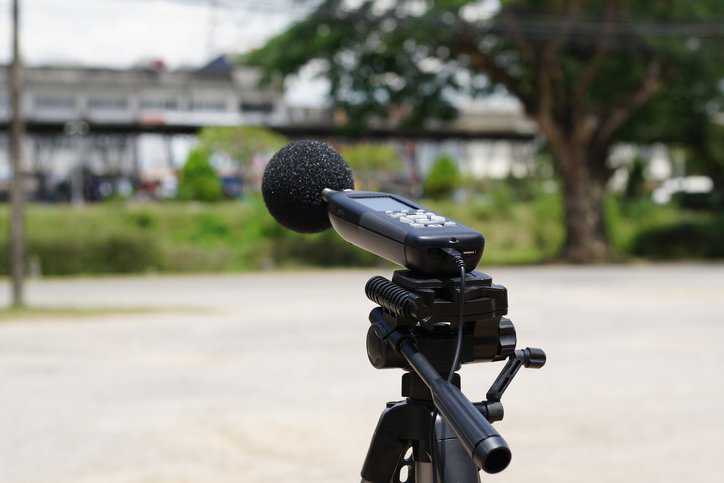ASA/ANSI S12.18-1994 (R2023): Sound Pressure Level

Sound pressure is the difference between the pressure from a sound wave and the ambient pressure of what the sound is traveling through (usually air). Sound pressure levels and decibels are important because they provide a numerical scale to work with to help prevent hearing loss. ASA/ANSI S12.18-1994 (R2023): Procedures For Outdoor Measurement Of Sound Pressure Level is focused on measurement of sound pressure levels produced by specific sources outdoors.
Importance of Sound Pressure Level Measurement
The sound pressure level (SPL) is the most commonly used indicator of the acoustic wave strength; it correlates well with human perception of loudness. To determine if a sound impacts human hearing, measuring the SPL and its duration time is required. Further, knowing the SPL in different environments is beneficial. Measure the SPL is important because small hairs within the ear can become damaged at 70 db, meaning that over time, noises over 70 db can contribute to hearing loss.
ASA/ANSI S12.18-1994 (R2023) states that the purpose of sound pressure level measurements falls into two broad categories:
- Sound pressure levels measured in order to characterize a specific source
- Sound pressure levels measured in order to characterize an ambient environment
This standard focuses on sound pressure levels obtained outdoors from specific sources; it details that sound pressure levels sources from a specific source outdoors are a function of source height, receiver height, the type of ground, and the local atmospheric conditions.
What Is ASA/ANSI S12.18?
ASA/ANSI S12.18-1994 (R2023) provides guidelines for measuring and reporting sound pressure levels associated with a specific source and observed under different environmental conditions. This American National Standard describes procedures for the measurement of sound pressure levels in the outdoor environment, considering the effects of the ground, the effects of refraction due to wind and temperature gradients, and the effects due to turbulence. The measured sound pressure levels can be used to calculate sound pressure levels at other distances from the source or to extrapolate to other environmental conditions or to assess compliance with regulation.
ASA/ANSI S12.18-1994 (R2023) describes two methods to measure sound pressure levels outdoors.
- General Method: Outlines conditions for routine measurements.
- Precision Method: Describes strict conditions for more accurate measurements.
Weather Impacts Outdoor Noise
Weather can influence sound propagation. For example, wind alters sound propagation by the mechanism of refraction; that is, wind bends sound waves. At higher altitudes, wind currents travel quicker than at lower levels due to natural undulations in the landscape and features such as trees, hills, and buildings that cause the wind to travel slower. This phenomenon causes sound waves to bend downward when travelling downwind from the noise source; it causes sound waves to bend upward when travelling upwind. The wind gradient can significantly alter the perception of noise volume as in moderate to strong winds the sound level will be louder or quieter depending on the location of the source and receptor, in relation to the direction of the wind.
Another factor that can impact sound propagation over long distances is temperature gradients in the atmosphere. On a typical sunny afternoon, air is warmest near the ground, with temperature decreasing at higher altitudes. This temperature gradient causes sound waves to refract upward, away from the ground, and it results in lower noise levels being heard at the listener’s position. Further, in the evening, the temperature gradient will reverse, resulting in cooler temperatures near the ground. This temperature inversion will cause sound to bend downward toward the ground; it results in louder noise levels at the listener position. Like wind gradients, temperature gradients can influence sound propagation over long distances and further complicate measurements.
ASA/ANSI S12.18-1994 (R2023): Procedures For Outdoor Measurement Of Sound Pressure Level is available on the ANSI Webstore.






